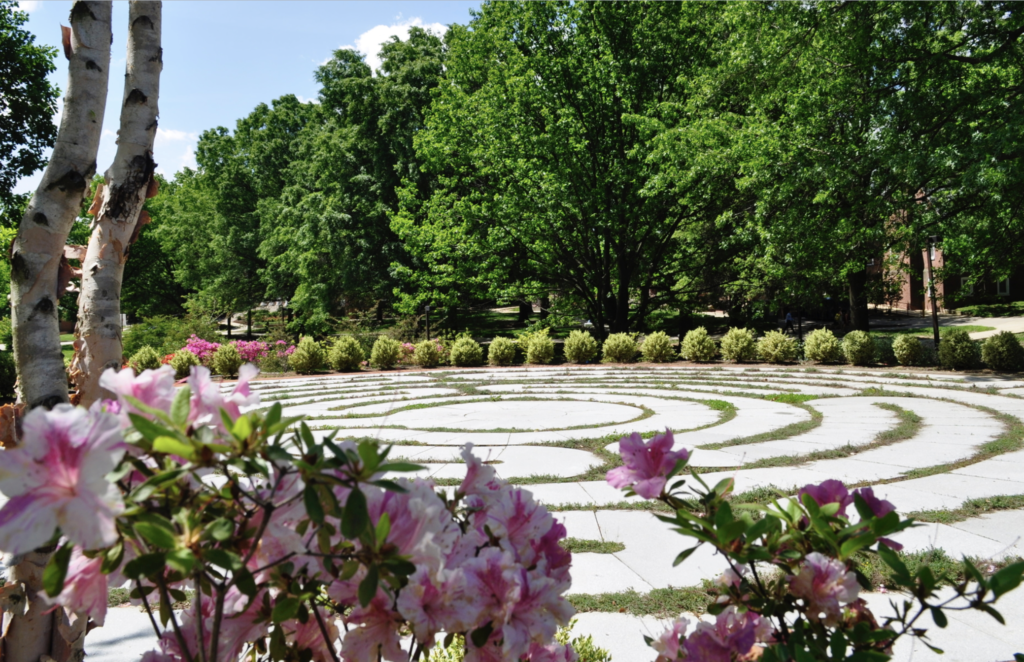At a time when vitriol too often eclipses tolerance; when divides seem to only be widening—nature can serve as a potent equalizer. It works to scaffold—lending support where and when it is most needed: when people are feeling isolated, unwelcomed, unaccepted for who they are. This kind of social isolation and fear is not only damaging to one’s mental health, but frays the social fabrics of our communities; leaving us vulnerable, weakened and torn. It flies in the face of nationwide efforts to strengthen, unify and build resilience in our cities and communities.
Let us share with you a recent story that brings this concept to light.
Afrouz Rahmati was maintaining a garden at the University of Maryland when we met her last month. We were touring the Sacred Place on campus with a group of fellow Firesouls looking to learn more about maintaining labyrinths.
As we entered the garden, Afrouz rose to greet us, a petite woman with a ready smile, rake in hand. We learned that she’s earned a job maintaining the space as a graduate student at the University. As she spoke, her love for the Sacred Place was apparent; and her belief in the power of a healing garden was authentic. We asked her if she’d like to join us for lunch. She accepted.

Afrouz had moved to the United States from Iran in 2017. After studying design and working as an architect for a few years, she hungered for more opportunities to pursue landscape design—namely to create healing gardens in the name of improved health and wellness. She was accepted by the University of Maryland’s Landscape Architecture Program and left her country and world behind, journeying to the DC area.
“I arrived right before the travel ban in January 2017. While much of the city felt familiar to me—the architecture and the buildings were similar to back home—I missed seeing smiling faces. It is always stressful starting out in a new country. Moreover, due to the new ban, it was unsettling to feel unwelcome upon beginning a new life,” said Afrouz. “I had a lot of uncertainty—especially at that time.”
The University’s international program works hard to welcome, orient and integrate new students from abroad. The program directed Afrouz and other newcomers to the University’s Sacred Place—the labyrinth and garden. It was here that she began to regain footing.
“Being in nature—in the labyrinth—was the first time I felt real calmness at that stressful time. I wanted to be there every day.”

She found herself seeking nature in the Sacred Place garden and beyond—a nature place near the Anacostia River. Her visits increased as she acclimated to her new surroundings and life, drawing strength and solace from nature. New friends were made and her studies flourished.
In one of those serendipitous moments (of which there are many in the nature field, it seems!), Afrouz sought work on campus. The school paired her with a job maintaining the garden and labyrinth—unaware of her previous sacred connection to it. “Oh, I know that space!” she said to administrators upon accepting the job.

This story has stuck with us. It begs the question: Rather than let the discourse further divide, what if we transcend it—through nature? The science proves that nature works to lower stress, improve moods and fortify our mental health—and the stories only continue to demonstrate its power to make us stronger, more resilient and united.
Want to visit a Sacred Place? Perhaps one of our 100+ spaces is near you.
Interested in creating one? It may be easier than you think!

